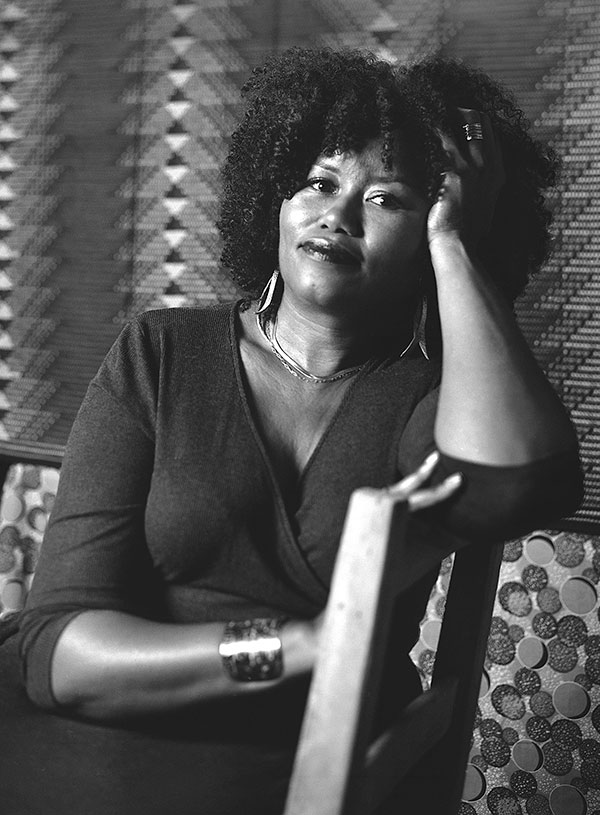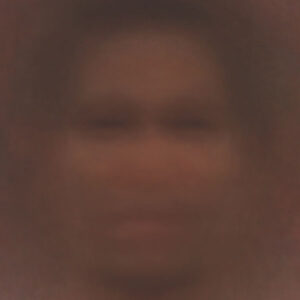‘The Black Index’
‘The Black Index’
When it comes to images of Black people, viewers have expectations, says Bridget Cooks ’02 (PhD). Her aim is to disrupt them.

SCHOLAR AND CURATOR: Cooks is an alumnus of the Graduate Program in Visual and Cultural Studies.
A few years ago, Bridget Cooks ’02 (PhD)—an expert on visual culture, a curator, and a professor of art history and African American studies at the University of California, Irvine—posed a difficult question, first to herself as a Black American and then to several contemporary Black artists.
It was sometime after a white supremacist’s murder of eight congregants and their pastor at Charleston’s Mother Emanuel African Methodist Episcopal Church; after the fatal beating of Freddie Gray by Baltimore police officers, and the shooting death of motorist Philandro Castile by police in Minnesota; but still well before the murder of George Floyd in Minneapolis, and the deaths of Breonna Taylor in Louisville and Daniel Prude in Rochester, all at the hands of police, during the spring and summer of 2020.
She asked: “How can we acknowledge that death; how can we acknowledge that threat and find some kind of will to go on?”
Her aim, she says, was to acknowledge personal and collective trauma, and then “to look at how artists, as creative problem solvers, are trying to survive and resist and create in a moment of spectacular Black death and anti-Blackness.”
Cooks selected artists who responded to her call and mounted an exhibit. The Black Index, which received its lead funding from the Ford Foundation, opened on the Irvine campus and traveled nationally for a year. It won national acclaim in the art world and, for Cooks, a 2022 Award for Excellence from the Association of Art Museum Curators.
As Cooks explains, the artists “build upon the tradition of Black self-representation as an antidote to colonialist images”— in other words, to racist images of Black people constructed and disseminated by whites.

ARTIFICIAL AI: The Black Index includes a series of works by Dennis Delgado ’97, whom Cooks met while at Rochester. In Do the Right Thing, Delgado, uses facial recognition software to create a composite image of faces from the landmark 1989 film by director Spike Lee. The composite, which draws from a database of all facial images the software can recognize, underscores the software’s omission from the database of many Black faces. Research has indeed shown that widely used facial recognition software does a poor job recognizing darker skin tones. Delgado majored in film studies at Rochester, and later earned an MFA from City College of New York.
Photo courtesy of Dennis Delgado
In part because the exhibit coincided with the COVID-19 pandemic, it had an especially robust website, and at Theblackindex.art, viewers can still navigate it along with recordings of several accompanying conversations and lectures.
These latter images, far more pervasive in American life than ones created by Black people, compromise the full humanity of their Black subjects in favor of categorizations, she argues. To see the works in The Black Index is, for most viewers, to confront the unexpected.
A series of drawings by Lava Thomas, for example, transforms mug shots of Black women arrested for participation in the 1955 Montgomery Bus Boycott into dignified portraits. Dennis Delgado ’97, whom Cooks met at Rochester, uses facial recognition software to create composite images in a series he calls “The Dark Database.” Delgado constructed the composites from a database of facial images taken from films such as Spike Lee’s Do the Right Thing and Ryan Coogler’s Black Panther. The resulting images are lighter than one might expect, given the preponderance of Black actors in the films. That’s precisely because, as research and tests have confirmed, the technology is ill-suited to recognizing darker skin tones. Many Black faces are simply not included in the vast datasets on which facial recognition software relies.
When Cooks entered the Graduate Program in Visual and Cultural Studies in the fall of 1993, Rochester was the only university in the country offering a graduate degree in the field. While art history tended to focus on an evolving canon of masterpieces, visual and cultural studies was dedicated to the study of images with reference to the social and cultural contexts of their creation and consumption. The program aligned well with Cooks’s approach to the study of art.
Her dissertation became the basis for her 2011 book Exhibiting Blackness: African Americans and the American Art Museum (University of Massachusetts Press). In it she traced the efforts of major museums to exhibit work by Black artists, beginning with the Art Institute of Chicago in 1927 right up to the early 21st century. Those efforts, intended to be forward looking, revealed a preoccupation with situating Black artists in reference to a white norm or in correcting past omissions. Neither context considered Black artists on their own terms.
The Black Index does. Cooks points to 100 ink drawings by Kenyatta A. C. Hinkle inspired by records of Black women who are murdered or disappear every year in the United States with little attention. Hinkle calls them “unportraits.” They’re not representative, in the traditional sense.
“She makes these impossible bodies,” says Cooks. “Women with six breasts, with five legs, with multiple heads. They’re moving; they’re doing things. There’s something magical and witchy about them.” Like the depictions of Black subjects by the other artists, they invite viewers to notice the gap between their expectations and what they see before them. They compel us “to be aware of how much we don’t know about these women, to be disoriented a bit, to become curious about who they are.”
The Black Index suggests a path forward for museums that have articulated the goal of diversity, equity, and inclusion in their exhibitions, collections, and programming. Cooks sees some bright spots, citing the University’s Memorial Art Gallery, which has taken significant steps toward those ends in the past decade. “I was impressed,” says Cooks, recalling a visit to the museum. “I loved the labels. I loved the selection of artwork.”
But for many, much larger museums, she has seen little progress. “I think the problems are many,” she says. Major museums tend to be hierarchical, run and largely funded by boards whose members are often at odds with their younger, more progressive curatorial staffs. Until there is widespread change in the composition of boards, she concludes, “we’re not going to see systematic change.”
— Written by Karen McCally ’02 (PhD)
This article originally appeared in the spring 2023 issue of Rochester Review magazine.


